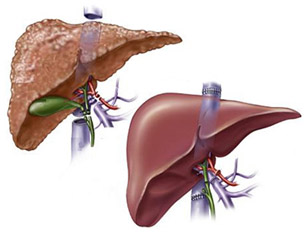Alcohol-associated liver disease and its stages
Alcohol-associated
liver disease is fairly common. People who heavily consume alcohol may progress
through these disease types over time:
- Steatotic (fatty) liver: Steatotic liver implies to the build-up of fat inside the liver cells and can lead to an enlarged liver. This is the most common alcohol-induced liver problem, and may cause systems like tiredness, weakness, and weight loss. Alcoholic fatty liver disease treatment would involve absolutely stopping alcohol consumption.
- Acute hepatitis: Alcohol-associated hepatitis is an acute inflammation of the liver. It involves death of liver cells, often followed by permanent scarring.
- Cirrhosis:
Alcohol-associated cirrhosis involves
the destruction of normal liver tissue. It leaves scar tissue in place of
the working liver tissue. In this situation, the liver might stop working
correctly. Cirrhosis CLD Treatment can even include liver transplant, in
severe cases.
Anyone
with alcohol associated liver disease must stop consuming alcohol at one. With
complete alcohol avoidance and time to recover, the liver may heal some of its
damage from alcohol, enabling people to return to a normal life. The scarring
from cirrhosis, at times, is partially reversible as well. However, if the
liver tissue loss is severe enough to cause liver failure, a good amount of the
damage might be permanent. There are also extreme cases where liver transplant
would be required. In such a situation, patients must be taken to best liver transplant hospital in
Delhi.
Broadly
speaking, diverse treatments are needed for various complications and symptoms
of alcohol-associated liver disease.

Comments
Post a Comment